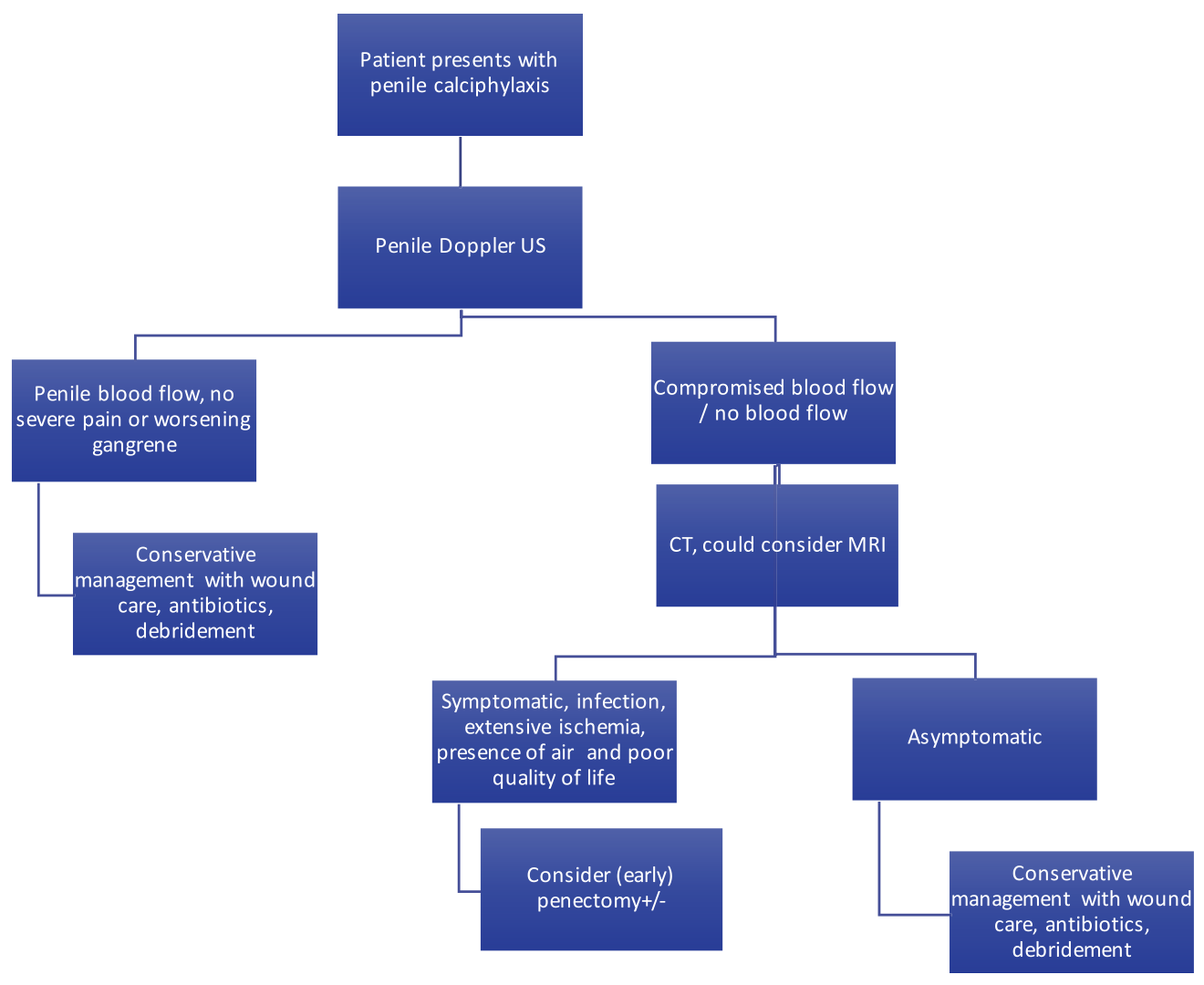Penile Calciphylaxis
Penile calciphylaxis
- Risk factors: only seen in ESRD patients (almost always on dialysis), diabetes is a common factor (~75%), may have history of steroid or other immunosuppresant use, inciting factors lead to calcium deposits in penile vessels
- Presentation: painful/necrotic lesions of glans/shaft, penile gangrene, difficulty voiding, extragenital necrosis especially of extremities
- Surgical intervention: usually very poor healing due to poor blood supply, aggressive debridement is not recommended, instead manage with local wound care
- Hypercalcemia: patients often have elevated calcium phosphate levels (> 70, normal 20-53) and secondary hyperPTH, can consider management with parathyroidectomy
- Prognosis: poor, median life expectancy 2.5-3 months
References
- Campbell, Rebecca A., et al. "Penile calciphylaxis: the use of radiological investigations in the management of a rare and challenging condition." Urology case reports 13 (2017): 113-116.
- Karpman, Edward, Sakti Das, and Eric A. Kurzrock. "Penile calciphylaxis: analysis of rish factors and mortality." The Journal of urology 169.6 (2003): 2206-2209.
- Wipattanakitcharoen, Aschariya, Kullaya Takkavatakarn, and Paweena Susantitaphong. "Risk factors, treatment modalities, and clinical outcomes of penile calciphylaxis: systematic review." World Journal of Urology 41.11 (2023): 2959-2966.
